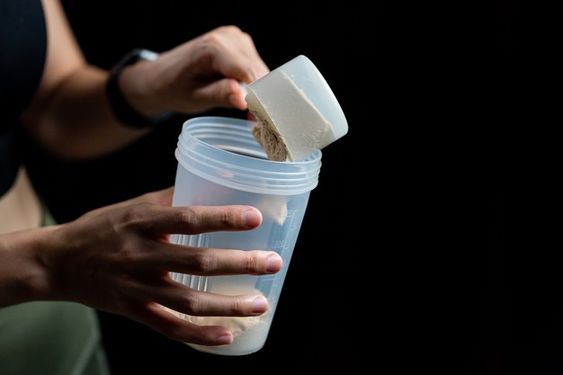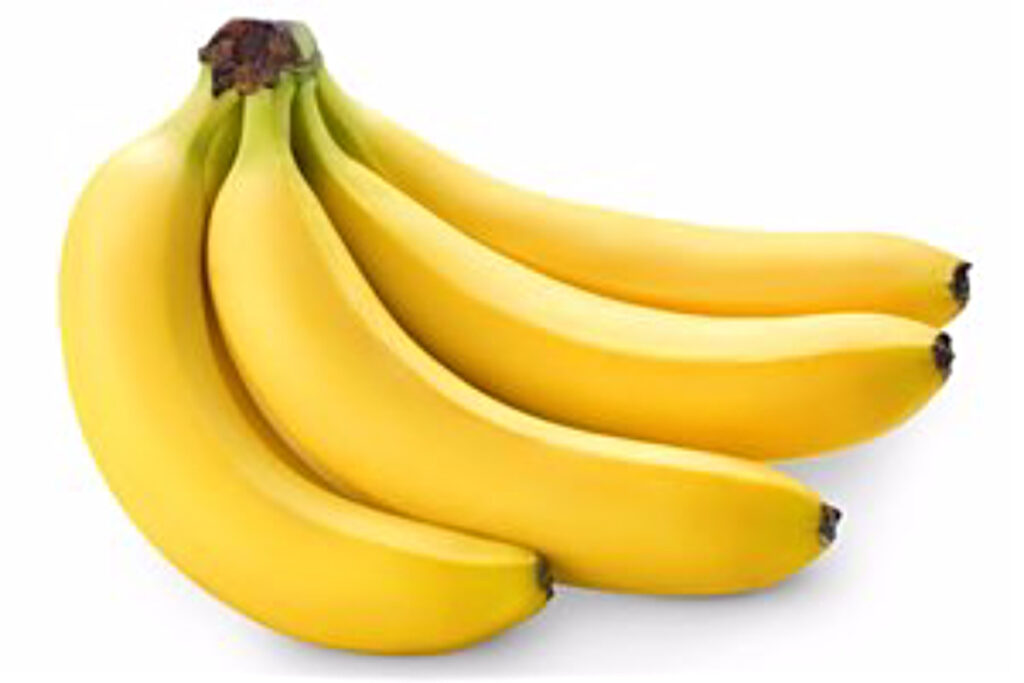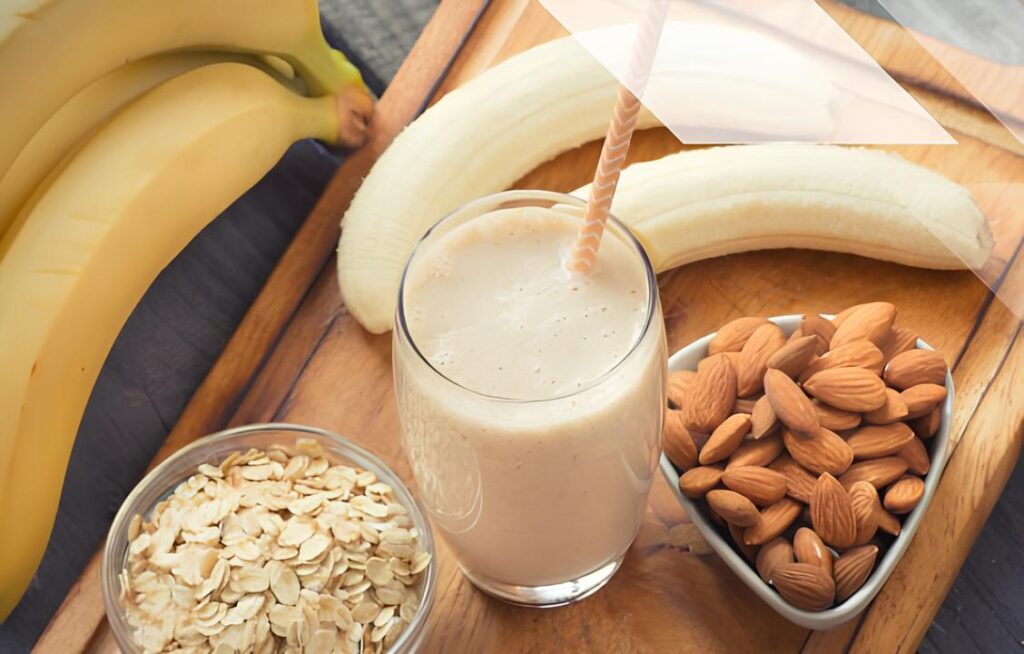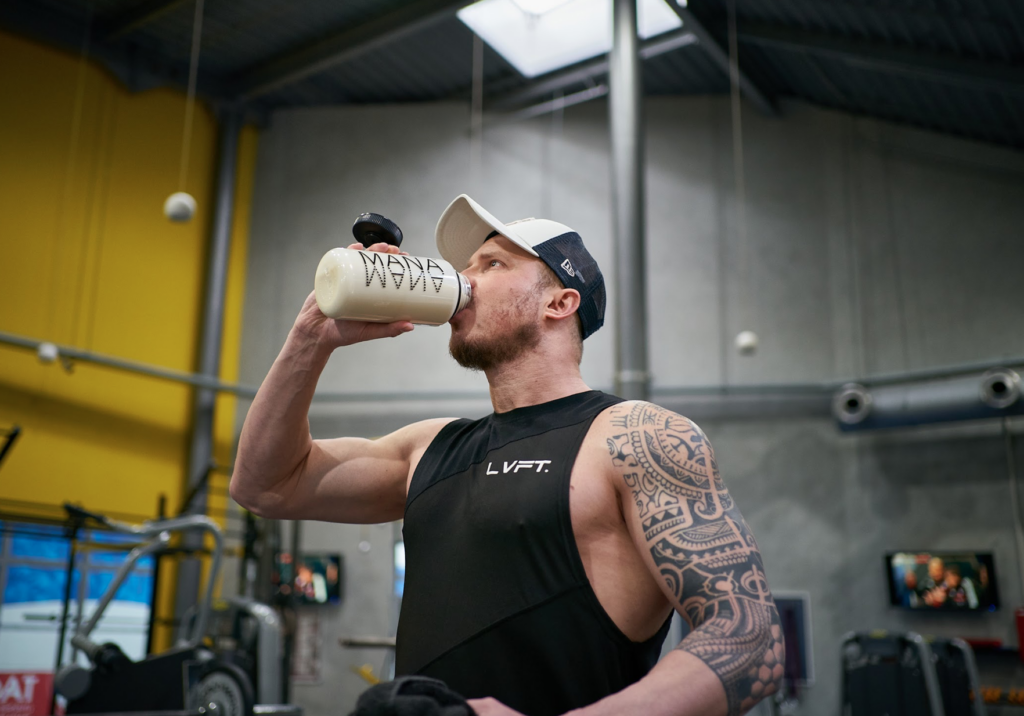Interested in Incorporating Protein Shakes into Your Routine but Unsure Where to Start?
You’re in luck! Having been a protein shake enthusiast for years, the personal trainer Toronto is here to spill most of my secrets and guide you through the process.
In Part 2 of our Comprehensive Protein Guide, I’ll cover the following:
- Are protein shakes good for you?
- How much protein do I need every day?
- What’s the best protein supplement to buy?
- How to use protein powder
- How to make protein shakes taste better
- Should I drink my protein before or after my workout?
Don’t forget to explore Part 1: ‘Determining Your Daily Protein Needs.’
Armed with this knowledge and a quality blender (discussed here), you’ll be able to seamlessly integrate protein shakes into your daily regimen.
Let’s prepare to shake up your routine!
Protein 101: Are Protein Shakes Good For You?
Protein is an essential macronutrient that helps our body rebuild muscle and is an important part of daily nutrition.
You can get protein from any number of real food sources, and you should prioritize real food in your diet.
Here are some examples of protein-rich food:
- Chicken, duck, other poultry
- Fish
- Meat
- Legumes (beans)
- Eggs
- Quinoa
- Nuts
- Milk
However, there are PLENTY of instances where you might want to also supplement your food with a protein shake or protein powder (here we go):
- You struggle to consume the recommended amount of protein every day (I cover this below!).
- You are a skinny person that needs to bulk up and need more calories in your daily intake!
- You are trying to lose weight and want to replace one unhealthy meal with a meal-replacement protein shake.
- You crave the convenience of a protein shake in place of preparing yet another meal.
In these instances, protein supplements or protein shakes can be awesome!
What this means in regular people terms: If you are strength training correctly and eating the right way, consuming enough protein will help you build muscle and perform better!

“Enough protein” in this context can include protein supplements and protein powders.
Just remember that protein shakes are not a panacea for all of your ailments:
- They are NOT required for being healthy.
- But they MIGHT help you lose weight
- They should only SUPPLEMENT (zing!) a healthy diet, not be expected to do all the “heavy lifting.”
You still need to:
- Eat well.
- Follow a strength training routine.
- Getting enough sleep.
If you’re not sure HOW to strength train, don’t worry – I got you covered.
How Much Protein Do I Need Every Day?
This excerpt has been extracted from our extensive guide titled ‘What’s the Optimal Daily Protein Intake?’
Contrary to the claims often made in protein supplement advertisements, the idea of consuming an excessive 500 grams of protein daily is unnecessary. Such statements are primarily aimed at encouraging rapid consumption of their product, urging you to make more purchases.
The reality is that recommendations concerning the necessary protein intake for the human body vary significantly among different sources, athletes, and experts. Each individual is unique, and protein goals should be personalized according to individual objectives.
Seeking specific figures? Let me break it down for you.
While the current international Recommended Dietary Allowance (RDA) for protein is 0.4 grams per pound of body weight (0.8 grams per kilogram of body weight), research suggests that this figure is too low and should be higher, regardless of your body composition.
Here’s a simple breakdown:
- If you’re overweight or obese, aim for 1.2–1.5 grams per kilogram (0.54–0.68 grams per pound). You need not calculate your ideal body weight or lean mass; base it on your total body weight.
- If you’re at a healthy weight, active, and striving to lose fat, target 1.8–2.7 grams per kilogram (0.82–1.23 grams per pound), leaning towards the higher end as you become leaner or increase your caloric deficit (by eating less or exercising more).
- If you’re at a healthy weight, active, and looking to build muscle, aim for 1.4–2.4 grams per kilogram (0.64–1.09 grams per pound).
- For experienced lifters in a bulking phase, intakes up to 3.3 grams per kilogram (1.50 grams per pound) may help minimize fat gain.
These figures serve as initial guidelines for you to experiment with as you observe your body’s transformation. Adjust your intake based on your specific objectives.
In essence, protein consumption is crucial for everyone, whether sedentary or an athlete:
- Adequate protein intake during a bulking phase ensures muscle growth with minimal fat gain.
- A sufficient protein intake while in a caloric deficit and engaging in strength training helps preserve muscle mass and facilitates fat loss (you might even build muscle while losing fat simultaneously).
In a recent ‘lean out’ phase, I personally consumed a significant amount of protein (240 grams at a body weight of 190 pounds), enabling me to reduce body fat, gain strength, and stay satiated.
To summarize, a significant portion of your daily meals should comprise a protein source.

If achieving your daily protein goal through whole foods proves challenging, contemplate incorporating a protein supplement.
However, keep in mind that you must also have:
- The right systems in place.
- The correct nutritional strategy.
- The appropriate workout regimen.
THEN, a protein shake might expedite your progress towards your objectives.
To support individuals with busy schedules like yours in optimizing their time at the gym and achieving tangible results, we’ve developed our 1-on-1 Online Coaching Program.
Our team will design a personalized workout plan and provide nutritional guidance tailored to your unique circumstances.
What’s the Best Protein Supplement to Buy?

When it comes to buying a protein powder or picking a protein shake, you’re going to encounter a few options:
- Whey protein is the most popular, readily available, and cheapest protein supplementation out there. Whey contains all the essential amino acids, and is one of the byproducts of milk that has been curdled and strained. It comes in both “concentrate” and “isolate” forms. Whey is more quickly absorbed by the body compared to its counterpart casein(next), which makes it a great solution right before/after a strength training workout.[7]
- Casein protein is the other byproduct of milk and also contains all essential amino acids. Because it’s more slowly absorbed by the body than whey, many people consume casein before bed assuming it’ll result in improved muscle growth during sleep! However, this study[8] shows that total consumption of protein during a day is more important than protein timing!
- Egg protein powders are made from, you guessed it, the protein in eggs – which means they may be a great alternative if you can’t use whey or casein for whatever reason.
Quick recap: whey and casein proteins both come from milk, and both can help rebuild muscle. Whey is more readily absorbed by your body and is usually less expensive than casein, which makes it our preferred form of protein for cost and ease of consumption.
Personally, I prefer whey. I find casein protein less palatable, and it doesn’t mix as well.

Also, don’t worry about timing whey for post-workout and casein for sleep. In my opinion, you’re just overcomplicating things.
Pick the one you enjoy and focus on getting enough protein in a day – that will get you 99.% of the way there to building muscle in the right places!
IF YOU ARE PLANT BASED: these are our recommendations for plant protein powders (from our guide to eating a Plant-Based Diet):
- Pea protein. A solid choice for vegan protein powder comes from peas, specifically the high protein yellow split pea. A quarter cup (28 grams) will get you about 21 grams of protein, and run you about 100 calories. There’s some evidence it might be comparable to whey in building muscle.[9] NAKED Nutrition offers a great 100% pea protein powder you can check out.
- Rice protein. A quarter cup of rice protein will contain 22 grams of protein and run 107 calories. Not too shabby. Plus, when you combine it with pea protein, you’ll end up with a complete amino acid profile needed for human growth.[10] A good brand to look into would be Growing Naturals.
- Hemp protein. While it doesn’t have as much protein as pea or rice (one cup will have 12 grams of protein and 108 calories), what it lacks in this department it makes up for in its nutrient profile. Hemp protein is derived from the seeds of the cannabis plant, but it’s bred in such a way that it won’t have any THC. What it will provide you with though is a decent source of iron, zinc, and omega-3s, which are all things vegans tend to be deficient in. Nutivia sells a good hemp protein if you are interested.
What about Soy Protein? Soy is a complicated beast, though in our opinion the fears around soy are overblown.
In other words, you do you, boo. If you consume soy and are struggling to hit your protein goals, consuming a soy supplement can help. If you are unsure on soy, consider getting your protein supplementation from any of the other sources above!
Now, regardless of what protein you pick what you need to know about protein shakes based on the collective wisdom of the 10 full-time coaches on Personal Trainer Toronto:
- When buying protein powders, buy a product with minimal other ‘stuff.’ Aim for one that starts with “whey protein concentrate” or “whey protein isolate” on the ingredients label, followed by a small number of ingredients – one of which will probably be “artificial or natural flavorings.”
- Pick a flavor that you like! Protein powders generally come in multiple a few flavors: vanilla, chocolate, strawberry, etc. I’m as plain as they come, so vanilla protein is my jam.
- Make sure to look at the ingredients and find one from a reputable brand. Always do your research even if it is one of the most popular brands (such as Muscle Milk). Some of these have had metals such as arsenic found in them.
- Many popular protein powders are just not great in terms of meeting their promises. Check out this lab rating’s review of “high quality” protein powders that meet this Reddit protein powder measurement results thread. There’s a lot of fraudulent stuff out there, so make sure you keep your Sherlock Holmes hat on when shopping!
How to Use Protein Powder (How Do You Make Protein Shakes Taste Better?)

Every protein powder container proudly proclaims, ‘Mixes wonderfully with 8 oz of water!’
This statement proves accurate for some protein powders, while for others, it can taste akin to attempting to swallow freshly mixed concrete.
Disclaimer: Never ingest actual mixed concrete. You’re welcome.
So, Step #1 with your newly acquired protein powder is to blend it with water and assess the taste.
By mixing only the protein and water, you’re adding minimal calories to your daily intake while elevating your protein levels for the day.
A win-win.

Depending on your caloric goals or if you’re considering a meal replacement shake, you have the freedom to experiment and concoct your personalized protein shakes by following these steps:
- Incorporate fruits like bananas, strawberries, blueberries—opt for frozen berry assortments from your local grocery store.
- Integrate a serving of veggies—blend in frozen spinach (you won’t even taste it!).
- Experiment with various liquids like almond milk, reduced-calorie orange juice, skim milk, or whole milk.
- Introduce healthy calorie sources such as peanut butter, almond butter, or cashew butter.
- Consider adding seeds like chia seeds or sunflower seeds.
Visualize yourself as a scientist, creating a distinct blend each time. Maintain a log of your ingredients and quantities until you discover the perfect blend of macros and taste that aligns with your goals!
MAJOR CAVEAT: Your body still adheres to the laws of thermodynamics. Simply labeling it a “healthy smoothie” doesn’t negate the potential 1,000 calories it might contain!
If weight loss is your objective and you’re facing challenges, it’s a matter of consuming too many calories. Be mindful of the calorie content in your swiftly consumed protein shake.
However, if your aim is to bulk up or build muscle, devising your high-calorie protein shake can effectively elevate your daily calorie intake.
Currently in a bulking phase, I have my post-workout shake, affectionately named the ‘Powerbomb Shake,’ which I have daily (no, it’s not actually patented).
POWERBOMB SHAKE
- Ice cold water: 16 oz
- Quaker Oats: 3 servings (120g)
- Whey Protein: 2 servings (62 g)
- Frozen Spinach: 1.5 servings (120g)
- Frozen Berries: .8 servings (120g)
And because we enjoy some fun around here, we’ve transformed the recipe into a handy graphic.

The macronutrient and caloric breakdown of that shake: 795 calories, 68g of protein, 106g of carbs, 13g of fat.
SHOULD YOU INVEST IN A BLENDER?
For over a decade, I stuck to using an affordable blender like this one available on Amazon!
Depending on your budget, you can also find blenders at your local Walmart, Target, Kroger, Publix, Sam’s Club, Stop & Shop, etc., for about 20 bucks.
However, as I’ve grown older and had more disposable income, I’ve become a Vitamix enthusiast. They are pricey, but you get what you pay for.
I’ve likely burned out the motors of over 10 inexpensive blenders, and since switching to a Vitamix, it has effortlessly blended my powerbomb shake ingredients twice a day in seconds.
If you have the means, it’s a worthwhile investment.
Alternatively, you can opt for a low-cost shaker bottle.
In my personal experience, these don’t mix as effectively as a blender, but if you’re on the go without a blender option, a shaker bottle can be a real lifesaver.
Note: if you’re using a shaker bottle, pour the water in first, THEN add the protein shake!
Here’s my strategy for ‘staying healthy while traveling’ with protein:
- Measure out 2 servings of protein powder and store them in a sealed plastic bag.
- Place your sealed plastic bag of protein in an empty shaker bottle.
- When ready to consume, remove the plastic bag of protein, then add water to the bottle.
- THEN, add protein.
Adding protein first? I can guarantee no amount of shaking will get all of that protein mixed into the liquid!
Should I Drink My Protein Shake Before or After My Workout?

Conventional wisdom tells us that we need to be consuming our protein shake IMMEDIATELY after our workout for maximum gains.
It also tells us that we need to be consuming protein every few hours for maximum protein synthesis by our muscles too.
But what does the science actually say?
WHAT THIS MEANS: The amount of protein you consume in a day is more important than the timing of your protein when it comes to muscle building. Consuming a protein shake before OR after a workout will result in increased physical performance and muscle hypertrophy – provided you’re training the right way!
If you need to train and then head to work and you can’t eat your protein until later in the day, do what works best for you!
Some people might hate training on an empty stomach, so consuming the protein shake before the workout is beneficial.
I personally train in a fasted state (which we cover in our Guide on Intermittent Fasting), so I don’t consume my protein shake until after my workout.
So, stop worrying about protein timing and instead put your focus on training, total calories, and getting enough protein in the day itself.
Not sure if you’re training right?
Getting Started Drinking Protein Shakes

Let’s recap the essential aspects of integrating protein shakes into your daily routine:
- Protein supplements should be seen as a complement to a well-balanced diet, not a replacement for it.
- If you’re mindful of your budget, I recommend purchasing Optimum Nutrition Whey Protein online in your preferred flavor.
- For those with a bit more financial flexibility, Jay Robb’s Grassfed Whey Protein is an outstanding choice (it’s my personal preference).
- Consider including a protein shake before or after your workout. The timing isn’t as critical as ensuring you meet your total daily protein intake for muscle building and recovery.
- View a protein shake as a convenient means to acquire high-quality protein when preparing a meal isn’t possible due to time or cost constraints.
- If you’re on a tight budget, a basic blender will work just fine. However, if you can afford it, investing in a durable option like a Vitamix is advisable—it can last you for many years.
These guidelines should help you begin! Experiment with various flavors and ingredient combinations in your smoothies to create something you genuinely enjoy!
Do you have any favorite protein shake recipes?
Do you have more questions about protein powders and supplements?
Feel free to share them with us in the comments!

